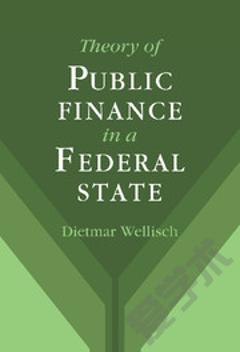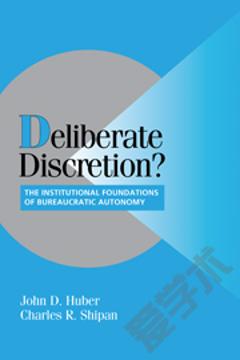Designing Federalism: A Theory of Self-Sustainable Federal Institutions
1. Federations and the theoretical problem: 1.1 Why Federalism 1.2 Definitions 1.3 The long search for stability Federalism as nuisance Federalism as engine of prosperity Riker as intermediary 1.4 The fundamental problem of stability 1.5 Basic premises and conclusions 2. Federal bargaining: 2.1 Alliances versus federations 2.2 The private character of public goods 2.3 Equilibrium selection and redistribution 2.4 The 'federal problem' 2.5 Bargaining for control of the center 2.6 Allocating jurisdictions 2.7 Three levels of institutional design 3. Two cases of uninstitutionalized bargaining: 3.1 The Czechoslovak dissolution 3.2 The Soviet dissolution 3.3 The feasibility of success in initial bargaining 3.4 Secession: the special road to renegotiation 4. Representation: 4.1 Two alternative models of Federalism 4.2 A national venue for bargaining 4.3 Within versus without 4.4 Direct versus delegated representation 4.5 Other parameters of design 4.6 Bilateral decision making and the case of Russia 5. Incentives: 5.1 Institutional enforcement 5.2 The court 5.3 Some simple rules of constitutional design 5.4 Voters versus elites 5.5 Desirable imperfection and a democratic as if principle 6. Political parties in a federal state: 6.1 An extreme hypothesis 6.2 Parties in a democracy 6.3 The idealized party system 6.4 Integrated parties 6.5 Integration outside the United States Australian Federalism and the role of parties Canada 6.6 India Leadership incentives Rank and file incentives The party and Federalism 1967 and thereafter 7. Institutional sources of federal stability I: 7.1 Introduction 7.2 Level 2 and the federalist 7.3 Level 3 institutions 7.4 Australia, Canada, Germany, and India revisited Germany Canada Canada vs Australia and India 7.3 Local and regional design parameters 8. Institutional sources of federal stability II: 8.1 Electoral mechanisms and societal structures Representation Ethnicity Defining federal subjects Number of local jurisdictions Authority over local governments 8.2 Bicameralism Symmetry Presidential authority Presidential selection Electoral connections 8.3 Level 1 and the scope of the federal mandate 8.4 Level 0 - things beyond design 9. Designing Federalism: 9.1 Russia Electoral arrangements Regional autonomy Constitutional matters Parties and the current status quo 9.2 The European Union Background The role of parties The puzzle of the collusion France versus Britain EU institutional design 9.4 Conclusion.
{{comment.content}}








 京公网安备 11010802027623号
京公网安备 11010802027623号